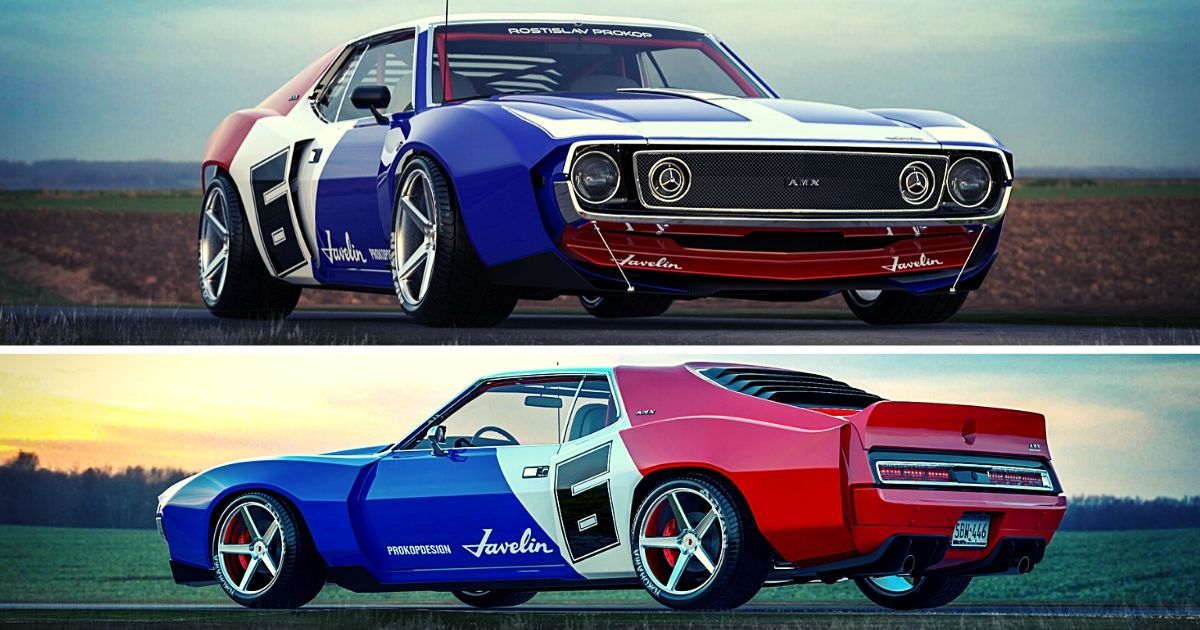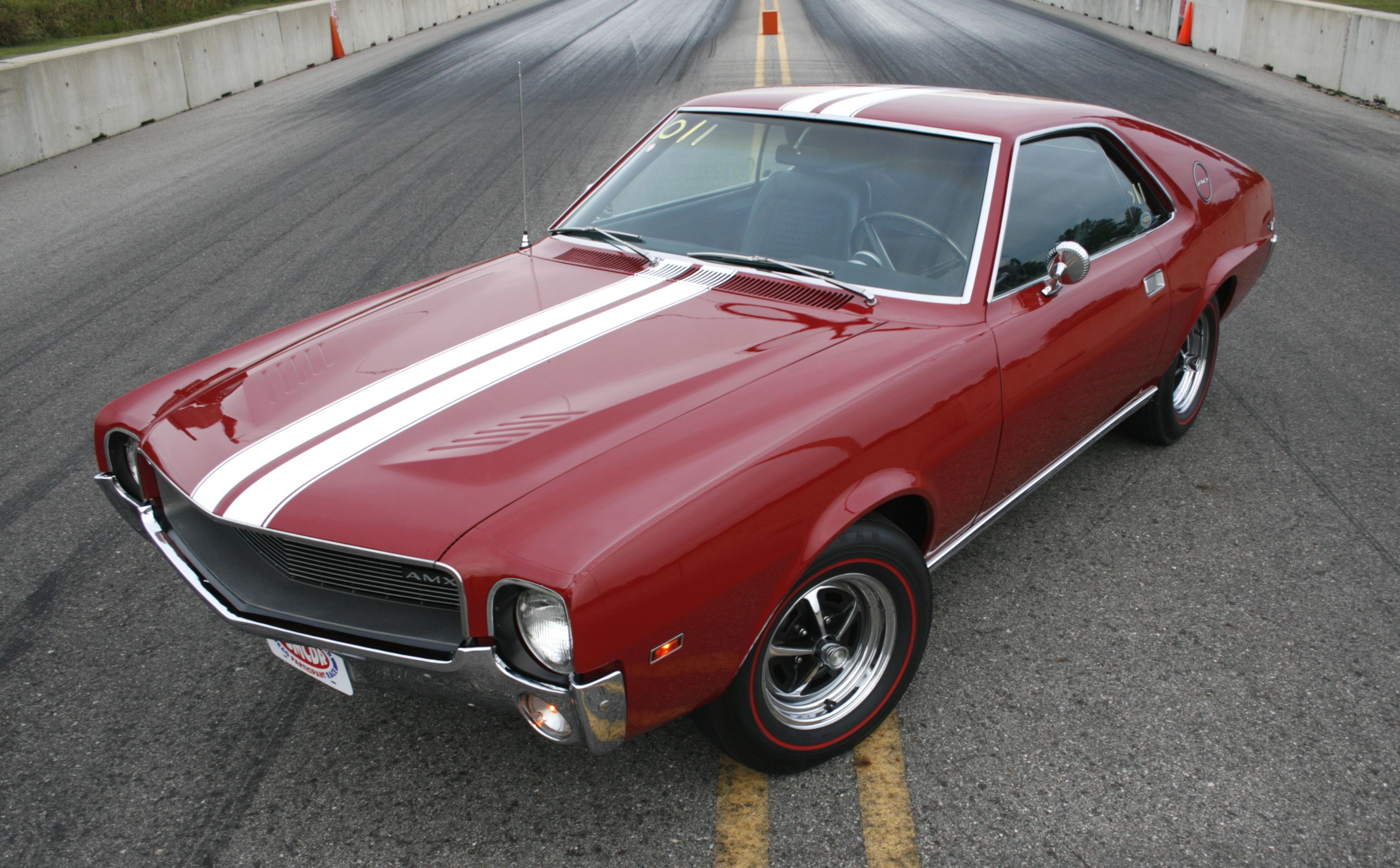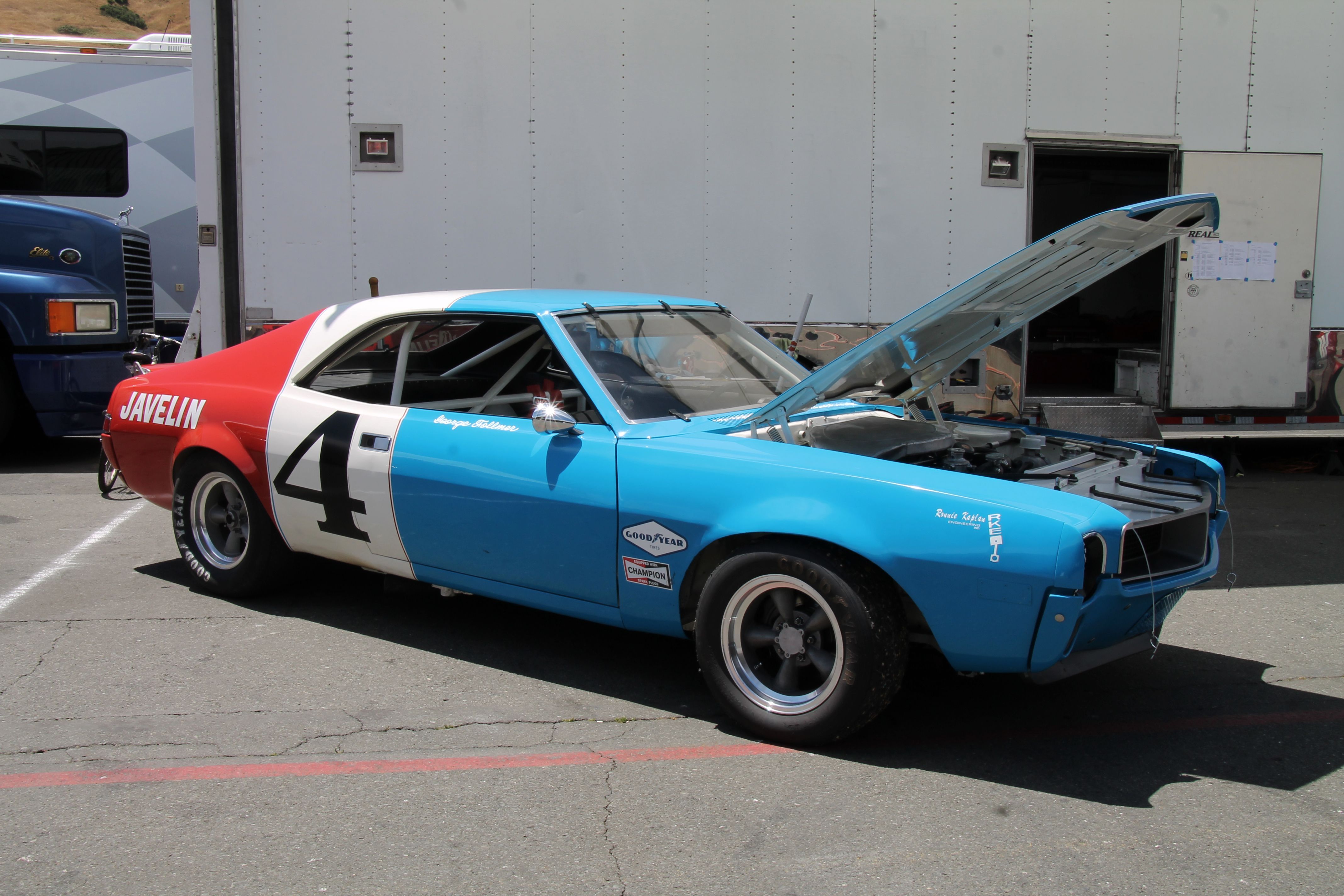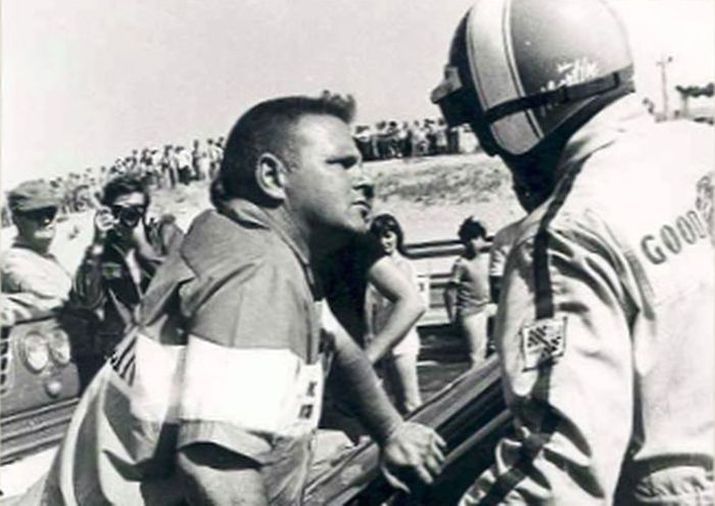The AMC Javelin is an American front-engine, rear-wheel-drive, two-door hardtop that is both made and produced by American Motors Corporation, an American automobile manufacturing company that was created by the merger of Hudson Motor Car Company and Nash-Kelvinator Corporation in 1954.
This model car was produced in two generations, spanning from 1968-1970 and 1971-74. Originally styled by Dick Teague, an American industrial designer who held positions at General Motors, Packard, and Chrysler, was available in various trim and engine levels.
The AMC Javelin was designed to be a racing phenomenon - so what happened? There is a whole host of info you don't know about AMC's muscle cars, so keep reading to find out more about this one. Just check out this photo to see what the AMC Javelin looked like on the race track with other sports cars.
Let's dive a little deeper to see the real story behind the AMC Javelin...
Development
American Motors' Javelin was the company's first entrant into the "pony car" realm of the automotive industry at the time, which was created and prompted by the manufacturing of the Ford Mustang. The design was created by merging two AMX prototypes from concept cars during 1966.
First-generation
The Javelin debuted in August of 1967 for the 1968 model year, with the new models being offered for sale during September of the same year. The car featured several safety measures, like interior windshield posts containing fiberglass padding, and paddle-style door handles for ease of use.
They complied with the National Highway Traffic Safety Administration safety standards, since they utilized exterior side marker lights, three-point seat belts, and headrests for front seats.
Available in just a two-door hardtop, body style, the Javelin came in premium SST models as well. The Standard engines were 232 cu in or a 290 cu in two-barrel carburetor V8. The optional engine was a 343 cu in V8.
Racing
American Motors entered the AMC Javelin in dragstrip and Trans-Am Series racing, an automobile racing series held in North America. In 1968, Kaplan Engineering was contracted by AMC to use two Javelins in the Trans-Am series. A year later, Jeffords, one of the two workers in Kaplan Engineering, left the team and left Kaplan to run the program. Using his prior work, Kaplan built three more cars, keeping one for himself.
For the 1968 racing year, the team underwent an overall success. The team improved and suffered only one 'Did Not Finish' due to an engine issue. The performance of the team can be accredited to Kaplan and his staff. He set out to resolve some handling issues and engine problems for the next season.
The building of a reliable engine, however, took some more time than he anticipated. The team started the 1968 season utilizing TRACO engines, but did not want to continue with these products, since the single-carb layout was a severe limitation to performance.
Dire Mistake
Towards the end of the year, Kaplan enlisted help from a retired engineer from AMC, Dan Byer. During this period, AMC replaced Kaplan's race program contact with two new men who did not have any automotive experience.
Unfortunately for AMC, these two new workers failed to enter the parts into the official AMC parts system, which became a clear mistake during the first race of the next season, beginning in Jackson, Michigan. Kaplan sent one of the older 1968 cars, fitted with one of the new engines, but since they had not qualified, the team had to beg to be entered into the race.
When the SCCA finally agreed to let them enter the race, they were forced to start last. Even with this last place start, they ended up catching up to the front of the pack. After the race, due to the big make-up in terms of placing, SCCA demanded to see their engine.
Kaplan had sent the cars home already. This caused a huge stir with the SCCA, who refused to leave the company and Kaplan alone until the parts could be homologated - a type of approval process that allows high-performance parts to be used not on public roads.
The Downfall
Kaplan approached management at this point and proposed that the concept behind the next year's car be modified. He suggested that AMC should not compete in sanctioned races, since the new engines were not recognized by the corporations and the old engines would not fare well in the races.
Unfortunately, AMC did not agree and Kaplan ran the year with the older-style engines, resulting in poor standings and various budget cuts. This was the middle of the downward spiral, showing the hidden truth behind the creation, the production, the lies, the deceit, and the downfall of the AMC Javelin in the racing world.





